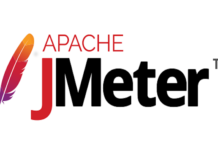Today I’ve encountered a vertical table in an SQL Database and I wanted to transform it to an horizontal one. A vertical table is described as an EAV model.
Imagine you have this table
CREATE TABLE VerticalTable ( Id int, Att_Id varchar(50), Att_Value varchar(50) ) INSERT INTO VerticalTable SELECT 1, 'FirstName', 'John' UNION ALL SELECT 1, 'LastName', 'Smith' UNION ALL SELECT 1, 'Email', 'john.smith@dummy.com' UNION ALL SELECT 2, 'FirstName', 'Jack' UNION ALL SELECT 2, 'LastName', 'Daniels' UNION ALL SELECT 2, 'Email', 'jack.daniels@dummy.com'
If you run
SELECT * FROM VerticalTable
you get this
| Id | Att_Id | Att_Value | |
|---|---|---|---|
| 1 | 1 | FirstName | John |
| 2 | 1 | LastName | Smith |
| 3 | 1 | john.smith@dummy.com | |
| 4 | 2 | FirstName | Jack |
| 5 | 2 | LastName | Daniels |
| 6 | 2 | jack.daniels@dummy.com |
To convert this into an horizontal table I’m going to use PIVOT.
SELECT [Id], [FirstName], [LastName], [Email] FROM ( SELECT Id, Att_Id, Att_Value FROM VerticalTable ) as source PIVOT ( MAX(Att_Value) FOR Att_Id IN ([FirstName], [LastName], [Email]) ) as target
And I will get this
| Id | FirstName | LastName | ||
|---|---|---|---|---|
| 1 | 1 | John | Smith | john.smith@dummy.com |
| 2 | 2 | Jack | Daniels | jack.daniels@dummy.com |
You can find the code here.


![[FIX] BizTalk Server 2010, 2013, 2013 R2 & 2016 errors “Class not registered (WinMgmt)” or “Access denied”](https://blogit.create.pt/wp-content/uploads/2018/07/access-black-and-white-blur-270514-218x150.jpg)




















I think I will become a great follower.Just want to say your story is striking. The clarity in your post is simply striking and i can take for granted you are an expert on this subject.
Outsourced IT Services Dallas
You just helped me out. Cheers pal